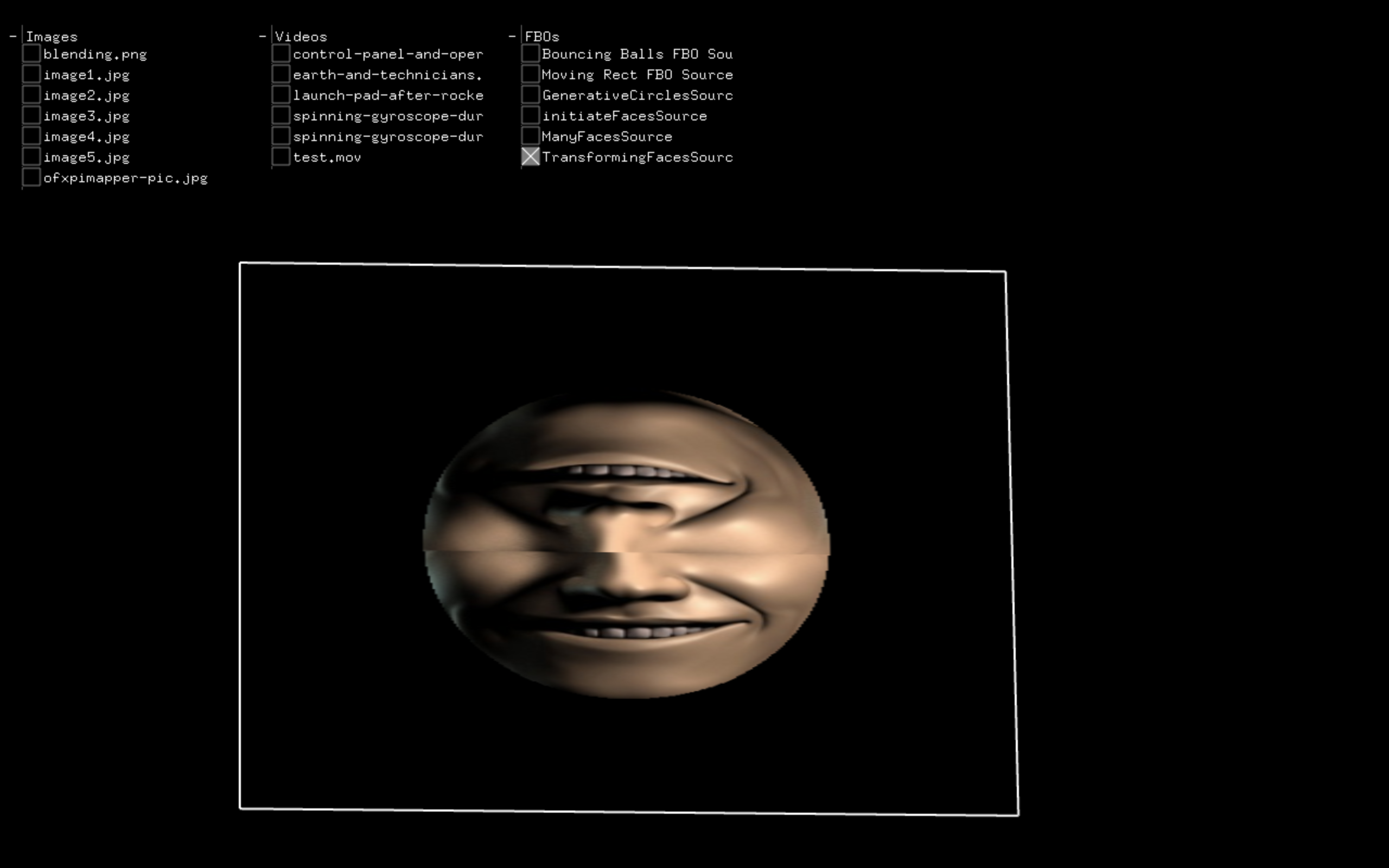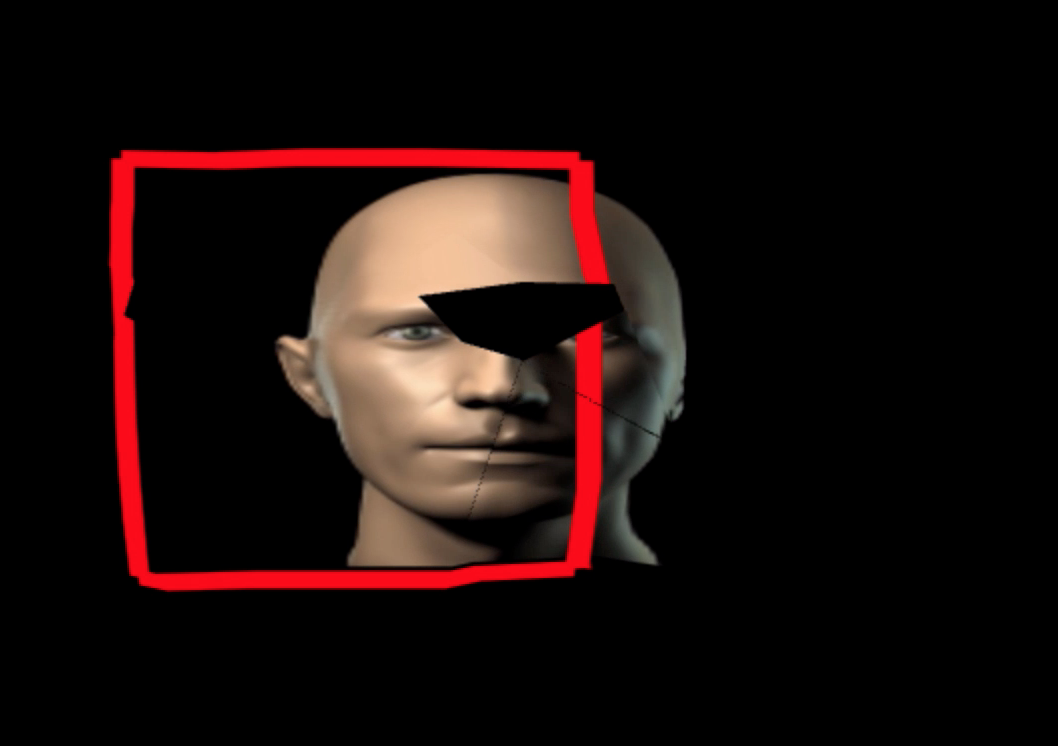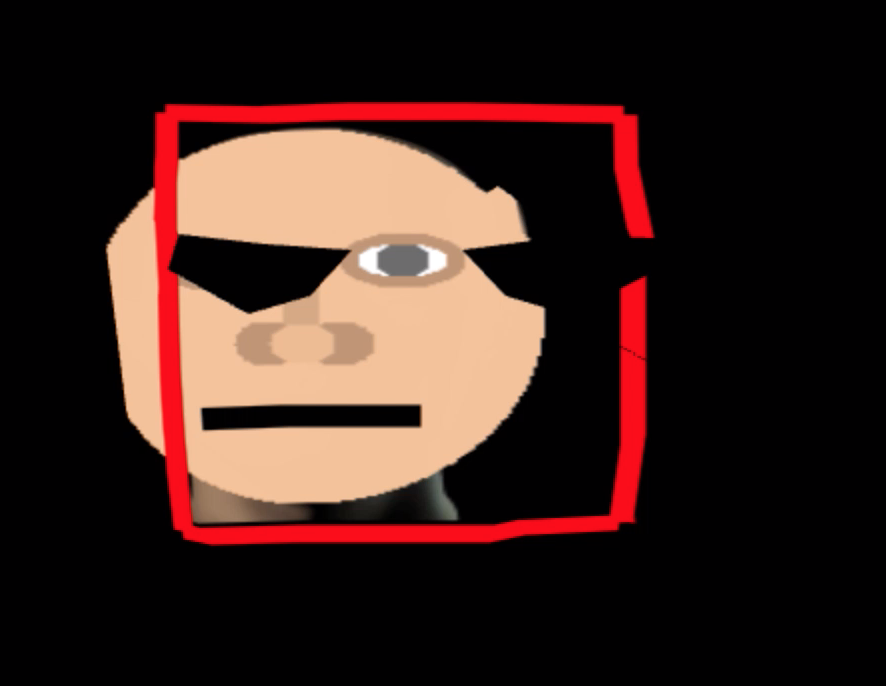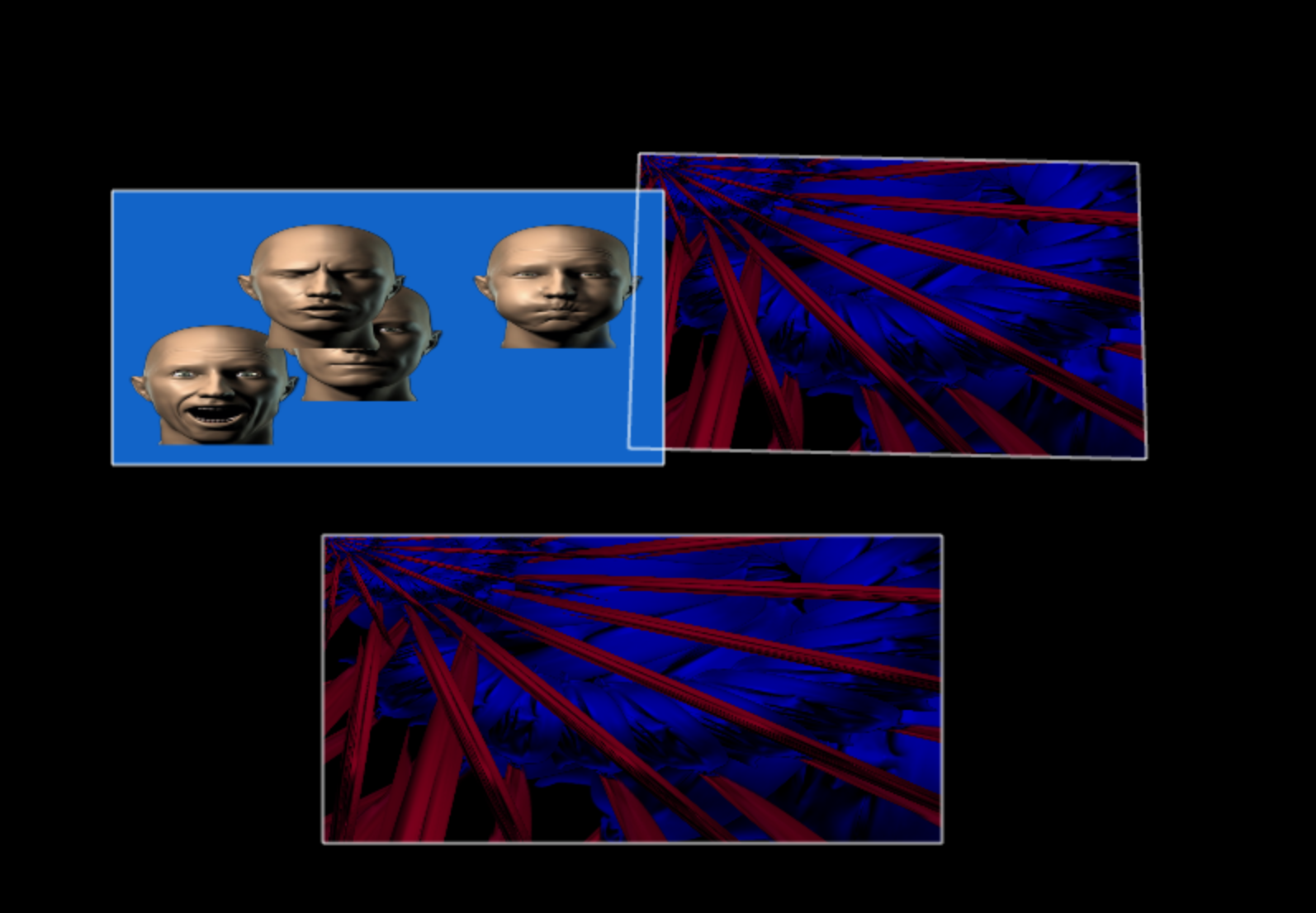Face Blind
A short story about seeing faces and not seeing faces.
produced by: Shirleen Bredee
Face Blind
“Numerous faces of emotions. I seal one and the other opens its mouth and swallows me completely!”
― Suyasha Subedi
I have a condition called prosopagnosia or "Face-Blindness" which makes it extremely hard for me to recognize and remember faces. The condition also makes it hard for me to 'project' the right facial expression onto social situations, which has sometimes led to people describing me as"distant" or "hard to read". In this project, I wanted to play with the concept of "face" as a whole and also wanted to create an imaginary thought bubble describing what I am really thinking about when I am seemingly "distant".
Concept and Background work
The overall piece is structured to mirror my experience of faces. I decided to project faces on a "face -surface". We equate faces with identity. We use them on official documents and as identifying units on social media. I play with the mask-like unidentifiable surface by contrasting it with my character, who may “look” more like a face but has few identifiable features. Further, I interchange between using his face many times simultaneously; calling into question the face as an “Identity unit”.
I wanted the takeaway experience of the projection to be slightly unhinging while still comedic, mirroring my experience of unfamiliar social situations. I leaned on psychological concepts such as the uncanny valley effect: humanoid face and body depictions make us slightly uneasy if they are too close to reality; but slightly off. As someone with face-blindness, I am more resistant to the uncanny valley effect than others. However, I can feel on edge encountering and interacting with new people. I aspired to make the viewer experience some version of that feeling via the uncanny valley effect. Hence I chose pictures from a blog experimenting with 3d scans but not adding much texture.The overall mood I wanted to achieve was quite inspired by Oliver Latta's animations and his interplay between the ridiculous and the sombre. (https://www.youtube.com/watch?v=jeALNdm6iZg).
In the details of each scene, I tried to emulate mind wandering as well as contrast the "uncanniness" of the face with ridiculous situations. This again is a reflection of the discord how I may feel and how my facial expression may suggest something different.
The aim of scene one is to introduce this character. Immediately he is made overbearing by having him outgrow the screen getting too much in your (the viewers) face. The character keeps "changing" facial expression which played into the ridiculousness of him and also was meant to mirror the phenomenon of daydreaming. Your feelings are neither positive nor negative. This was a theme I carried out through most of the projection. At one point in scene one the character "grows" and "shrinks" periodically. This is supposed to signify your internal thought demanding your attention and distracting you. In the beginning, the character still changes expression however towards the end the character is stuck in the facial expression with blown-up cheeks and turns greener and greener as he becomes more “neuseous”. The semi-spiral that follows is equally supposed to show a person spiralling from green (nauseous) into pink (calm). Sometimes when we have trains of thoughts they can consume us, calling for our attention and spin out of control. I tried to reconstruct this feeling through this scene.
In the second scene, I wanted to expand on the phrase "head in the clouds". The clouds in this instance being the characters head. The faces slowly multiply to then expand and move randomly across the screen. This scene is meant to explore the slower aspects of mind wandering. It is the only scene where I move away from a black background to a blue one, which is supposed to symbolize the calm of this scene as contrasted with others.
The third scene may seem faceless but if observed closely the generative shapes are compiled out of recoloured stretched and rotated versions of the same faces that I used for the rest of the projection. The colour contrast and movement in this scene are akin to creative cognition. I "hid" the faces within the geometry of the scene to mirror my abstraction of faces in life due to face-blindness in my projection. Similarly, faces are everywhere in the world as in my projection, we individualize and identify based on faces. It, therefore, seemed interesting to me to create a pattern where they were hard to identify; as I usually experience them.
The fourth scene I built on the concept of abstraction even more. In the first part, I construct a "magic-mirror" image from different parts of the face, as well as having a flashing effect from the change of emotions. In the second part, the red square in the middle of the figure is supposed to signify a "Magic-box". The 3D facial image magically "turns into" a 2D image every time it passes through the box. Unfortunately, the projection room was not dark enough and the nuanced differences between the 3D and 2D images could not properly be explored. In both these scenarios the "normal face" is changed. This mirrors both how strangely mind wandering can develop and how faces are really just an assemblage of features. Whether we change them in terms of changing the geometry of them within the face (as in the mirror image) or we change the representation of them (3D or 2D) they remain recognizable to us.
In summary, my concept drew from different parts of my experience as somebody who is face-blind as well as somebody, who like most of us has weird trains of thoughts that lead potentially nowhere
The Process
I used Xcode to create the source code and piMapper and piMapper scene manager to construct our scenes and surfaces. I stored all the faces in a vector, and created a system by which random arrays would be chosen at various points in time. In the first scene, I mainly experimented with scale and colour. In the second scene I focused on loops. In the third scene I experimented with rotating the entire screen in various ways as well as scale. In the final scene, I focused on the specifics of the "ofImage" function in C++. It was a challenge to make the storyline work with the technicalities as well as timing the scenes so that they would begin when they needed to in the projection. Because each of my scenes had two "sub-scenes" I spent a significant amount of time manipulating time frames so that the projection would move trough the piece coherently.
The Surface
We chose to project on a polygonal mask. I made this decision to expand on my concept of faces. It was very challenging to get all the surfaces to match the mask and my final .xml file had more than 8000 lines. Because of the small size of the mask, we had to change to a different part of the exhibition which unfortunately was not as dark as the initial spot. Because my projection involves a lot of contrast, this somewhat compromised the overall exhibition of my piece. We also spent a significant amount of time rescaling projection surfaces and working out and smoothing over errors in the .xml file.
Future development
If I could have worked on this piece for longer, I would have wanted to spend more time on each scene in relation to the projection surface. I coded most of this project at home and only addressed the issue of projection post-hoc. Therefore I feel that many of the scenes could have worked better on the small projection surface. Alternatively, I think it would have been extremely effective to reconstruct the same surface but scale it up by 4 or something similar. I initially had a few more scenes that similarly to scene three explored more generative patterns. However, due to time constraints within the projection, I had to cut down on these. If I were able to project on a larger mask, I feel it could have also been interesting to explore the geometry of the mask a bit more. For example by having some scene projections be specific to the "brain".
Self-evaluation
I think my piece had a very comprehensive and compelling storyline. I liked the overall themes and all parts of the projection worked well with each other. However, I could have done more to show my technical growth. I was at times quite restricted by my use of an image, as well as my extreme focus on it. The medium of projection was again very compelling and interesting. However, in the same breath, we were limited by both size and the fiddliness of constructing the projection surface; which cost us some of the time and energy we could have put into the projections.
References
http://frankinolupo.blogspot.com/p/about.html




































































